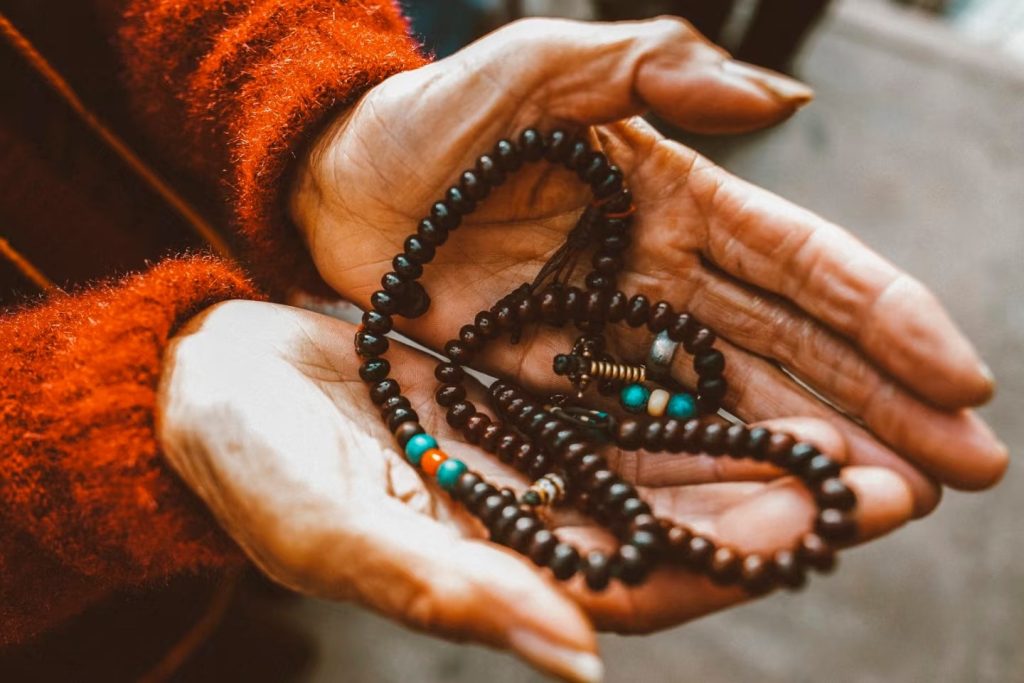Origins and Historical Evolution
Tibetan Buddhist jewelry traces its roots to ancient spiritual practices intertwined with Himalayan culture. The earliest prayer beads (mala), dating back to 7th-century India, were introduced to Tibet alongside Buddhism. These beads, initially made of shells or bones, evolved into intricate sacred objects like Dzi Beads , which originated in the Neolithic era and became symbols of divine protection. Another iconic item, the Kapala , crafted from human skulls, embodies the transcendence of ego and the wisdom of enlightened masters.
Sacred Symbols and Metaphysical Meanings
- Dzi Beads :
Known as “Heaven’s Pearls,” Dzi beads are believed to channel cosmic energy. Their patterns—like the “eye” motif—symbolize the omniscience of deities and balance yin-yang energies.

Buy The Same Tibetan Buddha jewelry – Click Here✨
- Nine Palace Eight Trigrams Plate :
This talisman merges Tibetan cosmology with Chinese divination, warding off negative forces and harmonizing environments.
- Kapala :
Used in rituals, skull-made Kapala beads represent impermanence and the merging of compassion with wisdom.
- Gau Box (嘎乌盒):
A portable shrine often adorned with turquoise or coral, the Gau holds sacred relics and invokes blessings from deities.

Buy The Same Tibetan Buddha jewelry – Click Here✨
- Jade and Gemstones:
Jade symbolizes purity in Buddhism, while coral and turquoise are linked to longevity and spiritual grounding.
Choosing Jewelry: Aligning with Spiritual Intent
- Material Matters: Opt for natural materials like turquoise (protection), coral (vitality), or obsidian (energy cleansing).
- Symbolic Resonance: Select patterns or deities that align with your spiritual goals. For example, a Vajra pendant signifies unbreakable resolve.
- Authenticity: Source items from reputable artisans to honor their sacred origins.
Wearing Guidelines: Rituals and Taboos
- Purification: Cleanse new jewelry with incense or moonlight to remove residual energies.
- Placement:
- Wear Dzi beads close to the heart for emotional balance.
- Avoid combining Dzi beads with nephrite jade, as their energies may clash.
- Respectful Use:
- Remove ritual items like Kapala during inauspicious events.
- Store Gau boxes above waist level to maintain their sanctity.
Conclusion
Tibetan Buddhist jewelry bridges the material and spiritual realms, offering protection, wisdom, and karmic blessings. By understanding its origins and respecting its rituals, wearers can harness its metaphysical power mindfully.







